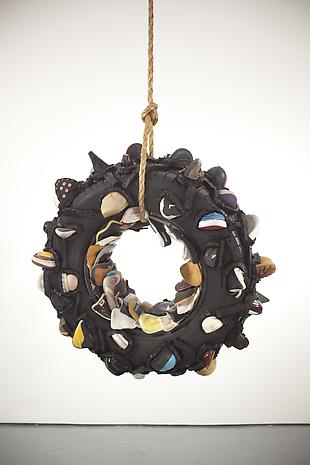First Thoughts:
My initial thoughts while looking at this piece were that the photos were taken at barrios in a Latin country. I have seen a lot of blocks and buildings that look similar when I’ve gone to countries like Colombia, Costa Rica, and Mexico. For some reason, my thoughts went to Cuba as the place where these were taken and I wasn’t exactly sure why. It could have been the colorful blue building or how hot and dry it seems in the pictures, but also could be because of a new television show I watched based on Cubans. The women stood out to me because she seemed like the store owner that barrios tend to have in their communities. She seems like she has a lot of stories and is personable but also is bad ass in a way.
Deeper Analysis
My thoughts on the photo set changed a bit as I continued to observe the photo set. It was almost like taking a journey in my mind as I began to form one idea and then a different meaning hit me and completely contradicted the initial thoughts I was having during my extended observation of the piece. For some reason, the pictures began to look almost homey to me even though I have never lived in a location like that but my thoughts kept going back to my grandmother and mom. Thinking back to stories they’ve told me from their past and reaching back to a few memories I have from driving by places they knew or grew up when I visited Colombia is what I think made me think about the pictures in a homey way. Especially leaning more towards my grandmothers past because she actually grew up with very little and lived in similar circumstances. As I thought about this more and looked at the pictures, I realized how wrong I was with the feelings of home. The buildings and surroundings showed in the pictures to me looked like they were supposed to be that way and if they weren’t, if they were more clean and modern, it would seem like it’s almost not authentic. It hit me that for me, this is what I expect to see when I think about Latin countries and it’s normal for everything to look so underwhelming. I realized how upsetting and wrong it was that this was the idea I had of what those places should look like because just because it’s what people are used to it doesn’t mean it’s good. The photographer, Rubén Natal-San Miguel, captured places that seem so typical of what to expect in areas like that, these pictures actually being Puerto Rico, in media and such but the buildings are abandoned. They’re boarded off and up for sale and it shows the economic situation that countries like Puerto Rico are dealing with. Media will show places like that filled with families, little kids playing in the streets, elderly sitting on the porches and in real photographs, those places are abandoned. Looking back at the picture of Carmen the bartender, it sticks out to me that the place looks empty and once again that’s something that I wouldn’t expect from a place like that. Reflecting further on the photos my thoughts went from “pretty blue building” to thinking it was “homey” to realizing how lonely and sad everything looked. The photo of the word “outrage” on the fence pretty much summarizes what I ending up feeling from the photos and one can only imagine how the actual people who wrote that feel. Something with so much potential and beauty just seemed dead.












